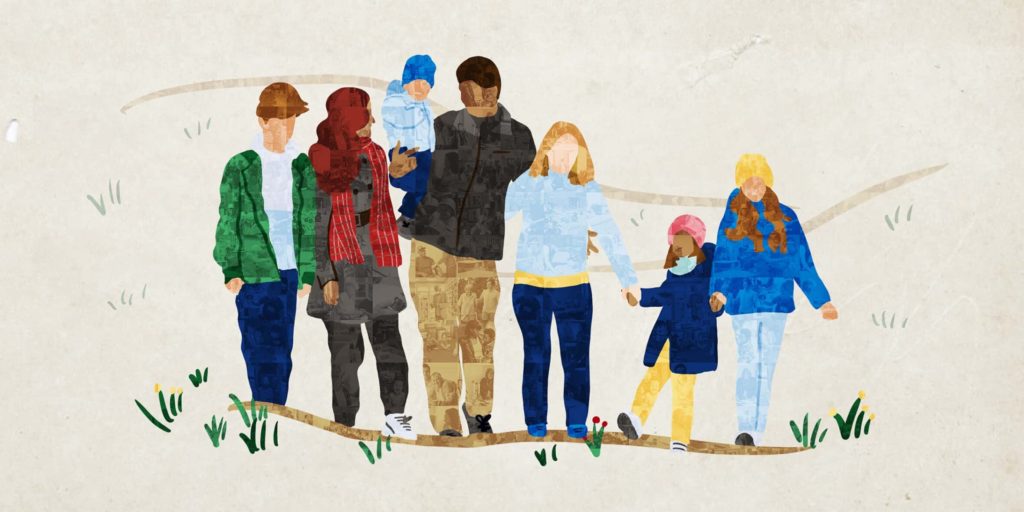More cash means more stability for children and families

by Will Petrik
All children and families, no matter where they live or what they look like, deserve stability, security, and basic human dignity. But for decades, certain state and federal lawmakers have prioritized tax giveaways for the wealthy while 46% of Cleveland children lived in poverty in 2019.
On July 15, tens of millions of families across the nation received their first child tax credit payment, which was part of the American Rescue Plan, the federal COVID-relief bill. The deposits of $300 per child under age six, and $250 per child ages 6 to 17, are the first of six monthly payments going to households with children this year. The expansion of the child tax credit will give children the opportunity for a brighter future, take some stress off struggling families, and put more money in peoples’ pockets to spend at local businesses and support the economy.
The overall payment is $3,600 a year per child under age 6 and $3,000 per child 6 to 17. The first half is going out to families in monthly payments and the other half will come in a lump sum after parents or heads of households file their 2021 taxes next year. This could be a game-changer for an estimated 389,000 adults in Ohio who reported recently (data collected between June 9 and July 5) that children in their household were not eating enough because they couldn’t afford enough food, according to the Center on Budget and Policy Priorities. The Center on Poverty and Social Policy at Columbia University estimate that the changes to the child tax credit will reduce child poverty in Ohio by nearly 49%. Families will have additional resources to help with food, diapers, safe housing, health care and other basic family expenses.
In addition to reducing childhood poverty, the child tax credit will improve the health and well-being of thousands of Ohio children. Research shows that living in deep poverty compromises children’s ability to grow and harms their income and health as adults. On the other hand, when families have resources they need to pay for the basics, children benefit in all sorts of ways. They are healthier, get better grades in school, have higher college enrollment rates, and earn more during their lifetime. They are less likely to engage in criminal activity, go to prison, or get involved with the child welfare system. When we, as a society, prioritize the health and well-being of kids and families, we all benefit.
The child tax credit expansion will also boost the local economy. Before the pandemic, six of the 10 most common jobs in the Cleveland metro area paid so little that a family of three needed food assistance to get by. The monthly direct cash payments created by the changes to the tax credit will give parents and caregivers with low-wage jobs more cash for car repairs, childcare, groceries, or other monthly bills. Ultimately, this spending will help stimulate the economy, because folks with low wages are likely to spend the funds they receive quickly in the local community. For comparison, research shows that four-fifths of federal food assistance dollars (SNAP) are spent in the local economy within two weeks and 97 percent of the resources flow into grocery stores and markets within a month. Families will have more security, be better able to pay for their basic needs, and their spending will help all of us recover.
The child tax credit will also expand opportunity for Black and brown families in Ohio. For too long, certain state and federal lawmakers have rigged the tax rules and shift public resources away from Black and brown communities, from poor and working-class Ohioans, and toward the wealthy and well-connected. The pandemic has hit Black Ohioans the hardest due to years of these tax, budget, and policy choices that excluded them from building wealth and financial security and from education and housing opportunities. The expanded child tax credit is a meaningful step to provide more support Black and brown children and families. Columbia University estimates a 52% reduction in Black child poverty and 61.5% Native American child poverty.
The expanded child tax credit will help children and families thrive, but it’s only temporary. The American Rescue Plan expanded the child tax credit through the 2021 tax year only.
Lessons from the 2008-2009 recession highlight the need to make the child tax credit reforms permanent. Back then, federal lawmakers ended needed support before families and communities recovered. As Ohio’s overall economy started to recover, state lawmakers cut taxes for the wealthy and large corporations instead of prioritizing regular Ohioans. As a result, many Ohioans experienced a slow, tough recovery.
This is why we must make sure the expanded child tax credit becomes permanent, and it’s why we are calling on Senator Brown, Senator Portman, and Ohio’s congressional delegation to make the expansion of the child tax credit permanent.
It’s also critical that our neighbors know they could be eligible for the direct cash payments. While most people who are eligible for the credit will get an automatic deposit or a check mailed to their address, thousands of Ohioans who haven’t filed taxes in the last two years will need to fill out an online form with the IRS to get the child tax credit. Residents with very low or no income who may not have access to the internet or a computer may need assistance to sign-up to receive the payments.
Check to see if you’re eligible for the child tax credit here: https://www.irs.gov/credits-deductions/advance-child-tax-credit-eligibility-assistant
This is a list of organizations that offer free support: https://www.refundohio.org/tax-sites
Learn more and apply for monthly payments here: https://www.findyourfunds.org/apply-for-funds
Editor’s Note: Will Petrik is a Budget Researcher for Policy Matters Ohio. Policy Matters Ohio is a nonprofit policy research institute that works to create a more vibrant, equitable, sustainable, and inclusive Ohio.



